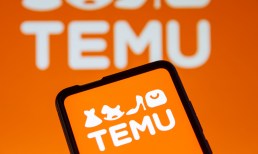2018: The Year Of The Subscription

It has been a year of subscription innovation, with businesses in many verticals – from food to transportation – providing consumers with products and services for a recurring fee. Below, PYMNTS rounds up the top subscription trends of the year and sheds light on how merchants used this offering to offer more flexibility for customers. These are just some examples of how merchants adapted their business models to subscription offerings this year.
Subscriptions in Food
In February, meal kit service Tovala notched funding from Tyson Foods’ Tyson Ventures as it took on the prepared food business with a new model. The company offered a discount on a steam oven, which had been described as relatively new technology in the world of residential kitchens, to encourage consumers to sign up for a subscription service. Tovala Marketing VP Lauren Funk told PYMNTS in a February interview, “we’re essentially making a deal with a customer that if you commit to ordering some meals with us, we’ll drop the cost of the oven.”
Tovala is the brainchild of David Rabie, the company’s chief executive officer, and Co-founder Bryan Wilcox, who is the engineer behind the company’s steam oven offering. In a previous report, it was noted that Rabie sees Tovala as the “Netflix of food.”
“Food is our content — and we’d like to offer the variety, convenience and quality of Netflix one day, with the scale and ubiquity (e.g. catering to all different demos/people) they’ve built,” he said, according to reports. Tovala’s wasn’t the only offering on the market: Anova Precision Cooker and Electrolux also reportedly provided similar services.
A few months later, DoorDash introduced its own subscription offering in August. By applying the business model to food deliveries, the company gives diners unlimited access to nearby restaurants through a service called DashPass. The offering enables diners to receive free delivery on orders over $15 for a fixed monthly charge. In a blog post, DoorDash claimed that just three orders per month pays for the membership. At the time, the company said it was “rolling DashPass out over the next few months.”
Subscriptions in Transportation
Mercedes-Benz USA and Mercedes-Benz Financial Services USA took a new business model for a spin with a luxury vehicle subscription service called the Mercedes-Benz Collection. The companies said in an announcement in April that drivers would be able to swap out vehicles based on their current needs. According to the announcement, the service would run with the help of Mercedes-Benz dealers and would offer multiple subscription tiers, while giving drivers a choice of sedans, SUVs, coupes and roadsters, among other models.
In a June announcement for the pilot’s launch, Mercedes-Benz USA President and CEO Dietmar Exler said, “we’re always looking to stay ahead of our customers’ needs and wants, as well as to bring new people to the brand. We know there is a market opportunity for people who would like the ability to move in and out of vehicles, depending on what they need or want at a particular point in time, or who don’t want to own a vehicle right now.”
In October, Lyft applied the subscription business model to ridesharing through an offering called the “All-Access Plan,” months after news surfaced that the company was testing the concept. With the service, riders pay a monthly fee to lock in a set price for 30 trips priced at $15 or less. In the event that a passenger exceeds that amount, she pays the difference. Beyond the 30 rides, Lyft offers customers a discount on additional trips.
“This is the first step toward delivering on our goal of making car ownership optional, and we’re constantly looking for more ways to provide passengers with the easiest, most convenient options possible,” the company said in a blog post in October.
This year, subscriptions weren’t only a way for consumers to save money on food delivery or rideshares: They also enabled companies to give consumers the option to purchase the products and services they need with the flexibility that a subscription can provide.



